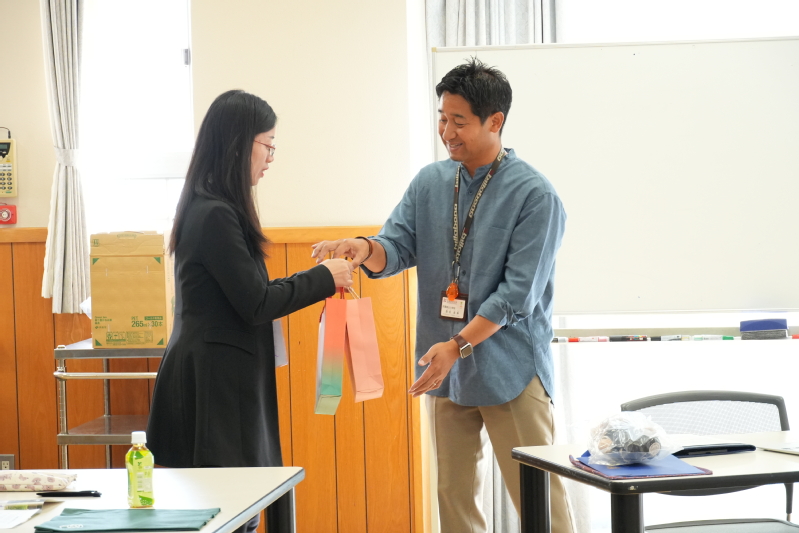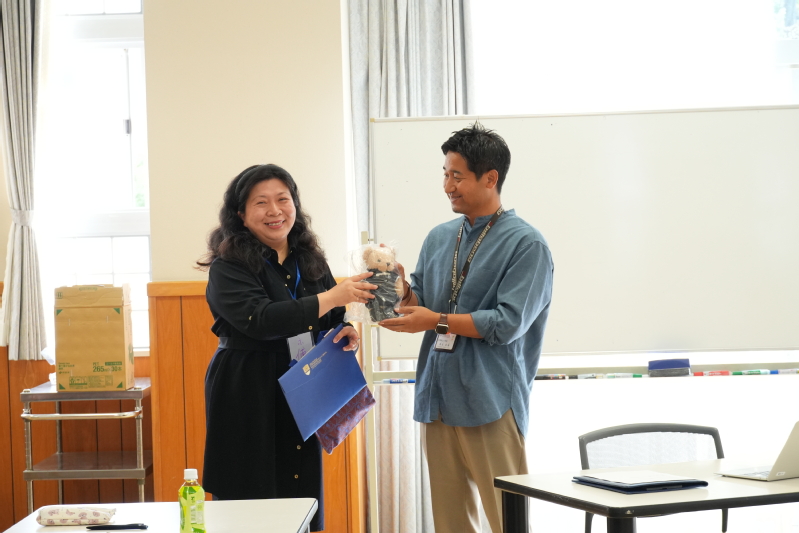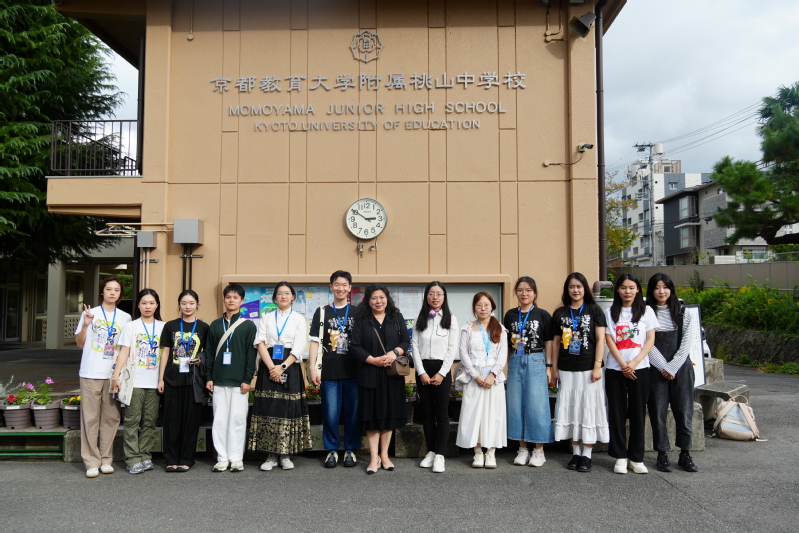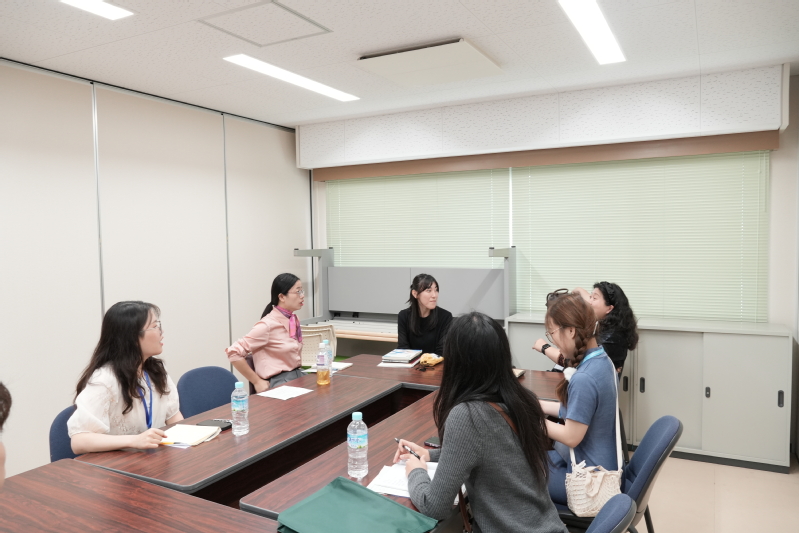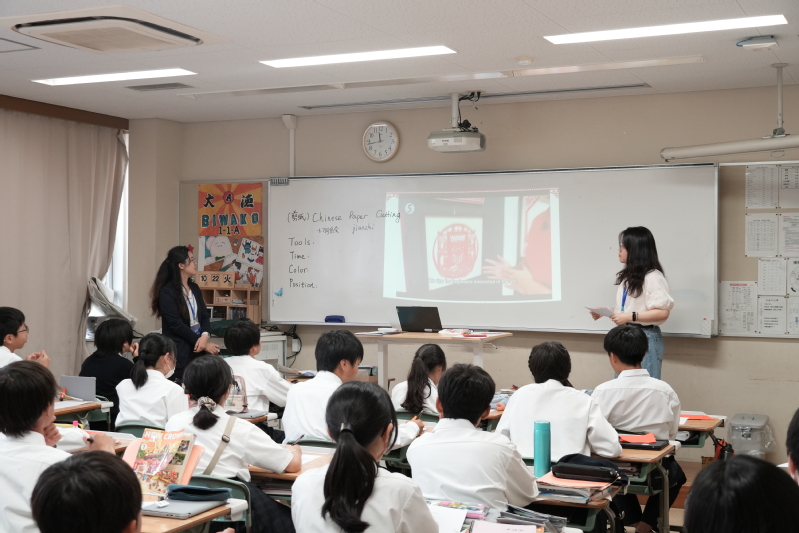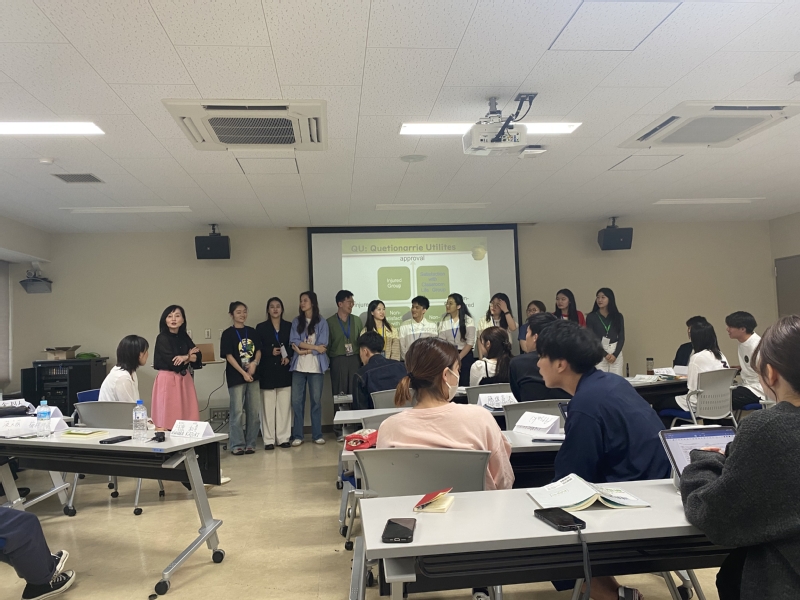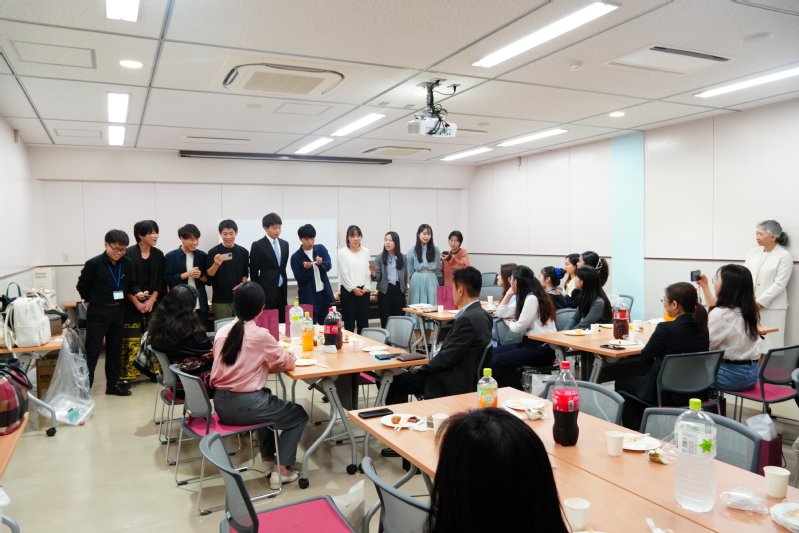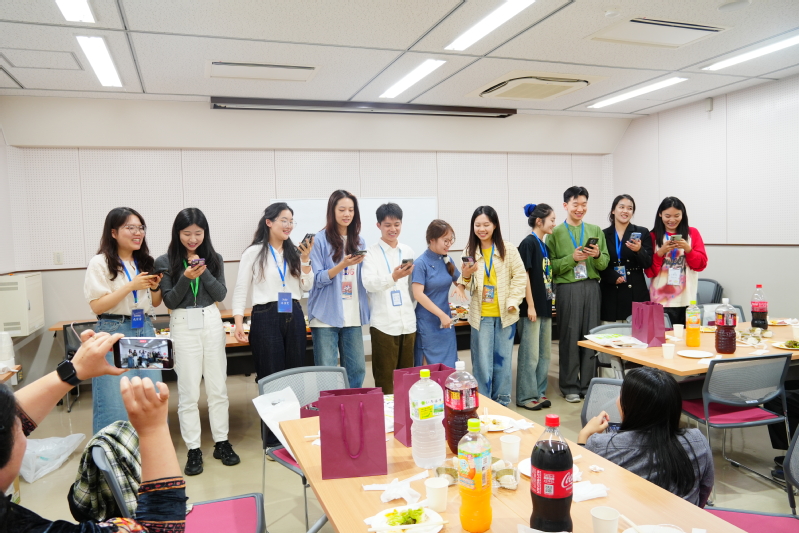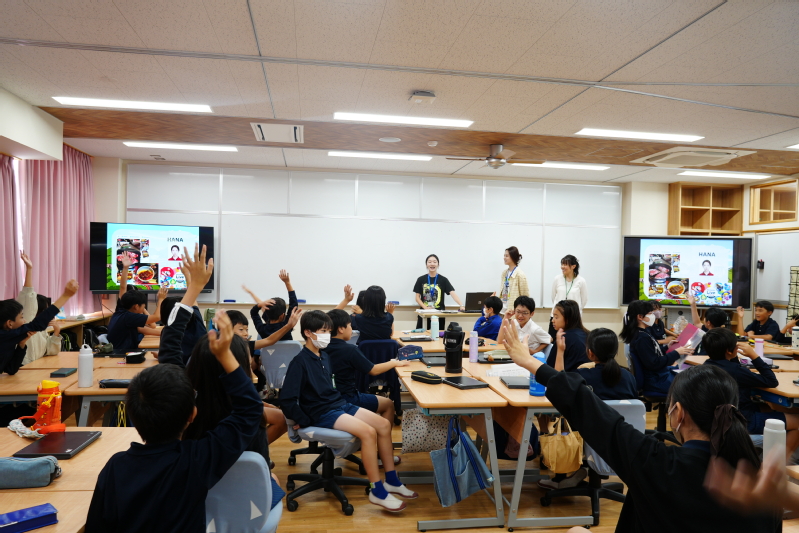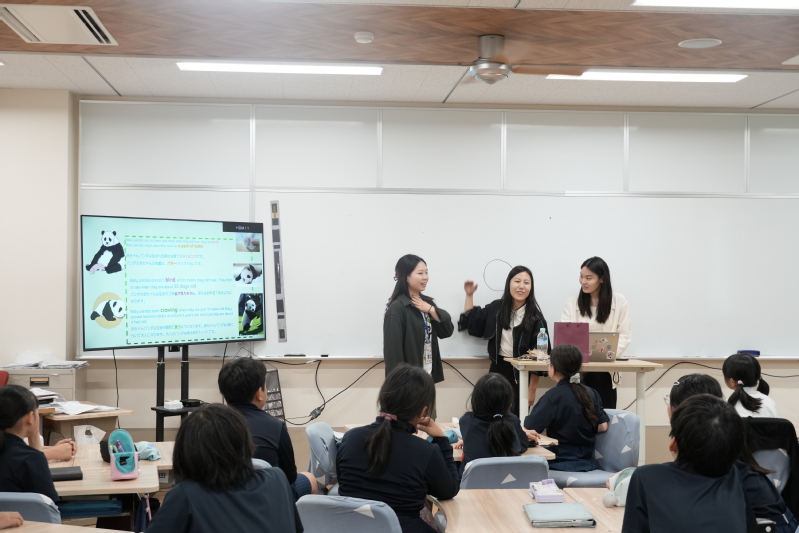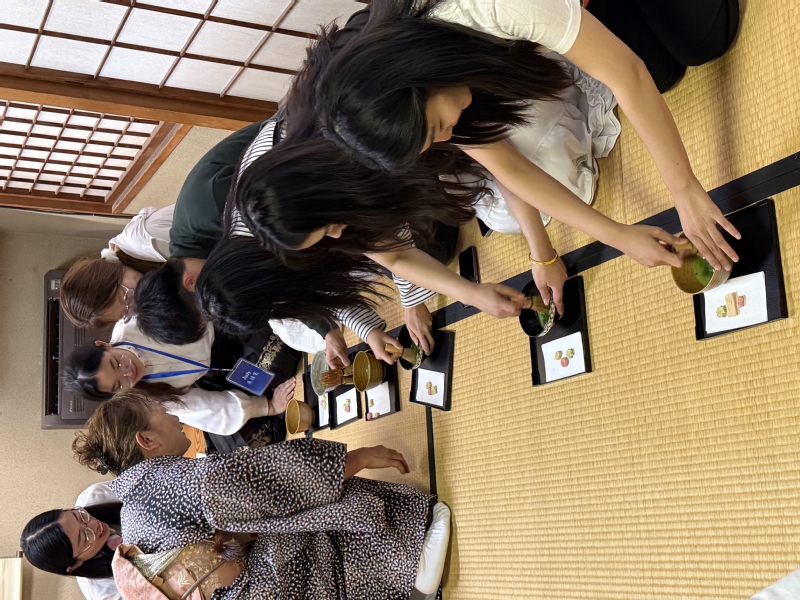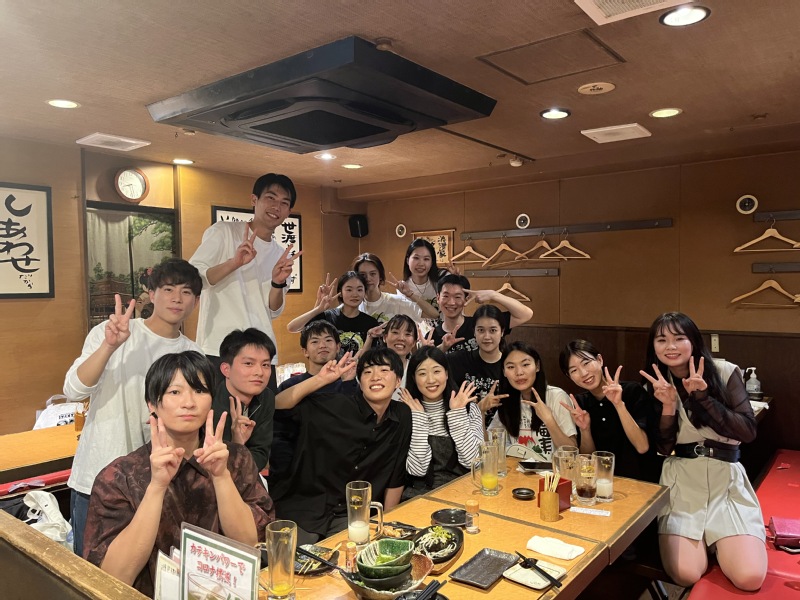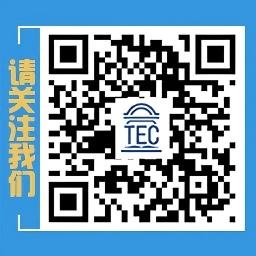During October 19-26, 2024, Teacher Song Qingqing from RIICE and Teacher Fu Yun, Director of the International Department of Shanghai Experimental School, led 11 graduate students on an exchange program to Kyoto University of Education in Japan. They conducted teaching observations and curriculum internships at Momoyama Elementary School, Momoyama Junior High School (both affiliated to Kyoto University of Education), and Kyoto Prefectural Momoyama High School.

On the morning of the 21st, the teachers and students visited Momoyama Elementary School Affiliated to Kyoto University of Education. As a Designated School for Curriculum Research and Development by Japan’s Ministry of Education, Culture, Sports, Science and Technology (MEXT), the school’s Vice Principal Yoshiyuki Kuwana warmly welcomed the delegation from Shanghai Normal University. He detailed the school’s distinctive features in creative education, educational informatization, school activities, and international exchanges, and showed the group around various facilities. Later, Teacher Song Qingqing, Teacher Fu Yun, and Vice Principal Yoshiyuki Kuwana exchanged gifts. The students and teachers observed a 5th-grade math class and a 4th-grade science class, leaving a deep impression on the school’s student-centered and interactive teaching approach. At noon, the delegation experienced the school’s shokuiku (food education) culture, and during lunch, they had a lively discussion with Vice Principal Kuwana on educational differences between Chinese and Japanese primary schools, including teaching spaces, curriculum design, and teacher-student interaction.
|
|
|
|
|
|
|
On the morning of the 22nd, the group visited Momoyama Junior High School Affiliated to Kyoto University of Education. Vice Principal Masafumi Akiyama briefly introduced the school’s basic information and sports-focused features, then took the delegation on a campus tour. During the class observation session, the group watched Japanese language and English classes. The frequent use of digital devices in Japanese classrooms triggered in-depth reflections among the Chinese teachers and students, who discussed and reflected on educational digital transformation with the teachers after class.
|
|
|
After the observations, the graduate students from our institute, in pairs, taught three Chinese traditional culture courses to three first-grade classes at Momoyama Junior High School, featuring cross-cultural teaching. The team of Cheng Jialei and Zhu Jiawen conducted a course on Traditional Chinese Paper-cutting Art, cleverly integrating the mathematical concept of axial symmetry into paper-cutting activities, which fully aroused students’ interest in Chinese traditional culture through on-site practice. Feng Yuan and Shi Chenying’s team taught The 24 Solar Terms of China to the second class, using music, pictures, and classroom games to stimulate students’ imagination about the solar terms. Jia Yun and Ma Yining’s course, Suzhou Lacquer Fan Art of China, introduced the history, types, and functions of Chinese lacquer fans with rich illustrations, and let students experience the charm of traditional Chinese craftsmanship through hands-on fan-making activities. After class, Japanese students introduced their class characteristics and presented hand-made paper cranes and other gratitude gifts to the teaching teams.
|
|
|
|
On the afternoon of the 22nd, invited by Professor Noriko Katayama from the Graduate School of Integrated Professional Education at Kyoto University of Education, our graduate students and those from Kyoto University of Education jointly participated in a master’s-level cross-cultural course on Student Guidance and Emotional Support. During the post-class exchange and reflection session, they shared their insights and thoughts on cross-cultural courses. Later, Kyoto University of Education held a warm welcome ceremony for the delegation. Teacher Song Qingqing and Teacher Fu Yun (Director of the International Department of Shanghai Experimental School) exchanged gifts with the Vice President of Kyoto University of Education, and graduate students from both sides sang for each other. The exchange was lively and harmonious.
|
|
|
|
|
|
On the morning of the 23rd, the delegation returned to Momoyama Elementary School Affiliated to Kyoto University of Education for cross-cultural teaching. The team of Zhou Nuonan and Hua Xuanzi taught two Chinese Zodiac courses to 4th and 5th graders, detailing the historical origins and mythological stories of the 12 Chinese zodiac animals. They also stimulated students’ enthusiasm through activities like asking about their zodiac signs and making zodiac clay figurines, vividly spreading the charm of traditional Chinese calendars. Yu Moran and Ran Ran’s team taught two courses on Giant Pandas: China’s National Treasures, introducing pandas’ habitat changes, endangered status, living habits, and diet, showcasing popular pandas like Huahua, Menglan, and Qizai. They also included a session on drawing panda cards, which saw high student participation.
|
|
|
On the afternoon of the 24th, the group visited Kyoto Prefectural Momoyama High School to observe its comprehensive inquiry courses. As a MEXT-designated Super Science High School and Super Global High School, the school is well-known for its high school curriculum reform and promotion of inquiry-based teaching. Led by Professor Noriko Katayama, the delegation observed natural inquiry courses in the school’s Meteorology Club, Science Club, and Programming Club, and had in-depth discussions with teachers about similarities and differences in comprehensive curriculum reform between China and Japan, sparking profound reflections from both sides.

Beyond class observations and interdisciplinary teaching, the delegation, accompanied by graduate students from Kyoto University of Education, also experienced the charm of Kyoto, an ancient capital. On the afternoon of the 23rd, with assistance from members of Kyoto University of Education’s Tea Ceremony Club, they gained an in-depth experience of the ichigo ichie (once-in-a-lifetime) tea ceremony culture of Japan’s Omotesenke school. Additionally, the group visited famous attractions such as Kiyomizu-dera Temple, Fushimi Inari Shrine, Yasaka Shrine, Arashiyama, Uji, and Nara, tasted Kyoto’s specialty cuisine, and engaged in in-depth cross-cultural exchanges.
|
|
|
Kyoto University of Education is a sister school of Shanghai Normal University, with a well-established mechanism for exchanging graduate students to each other’s universities and affiliated primary and secondary schools for internships. This exchange activity will further consolidate the cooperative relationship between the two schools and provide richer teaching practice pathways for cross-cultural exchanges among graduate students from both sides.




